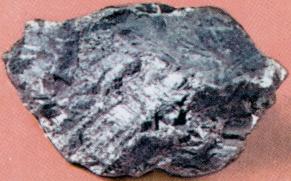 Astronomy View all facts Glossary Help
Astronomy View all facts Glossary Help Astronomy View all facts Glossary Help Astronomy View all facts Glossary Help |
| physical object > natural object > particle > element > metalloid element > metallic metalloid |
| metallic metalloid comparison table | ||||||||||||||||||||||||||||||||||||||||||||||||||||||||||||||||||
| Subject | has pronunciation | has space group | has stable isotope | has thermal neutron capture cross section | has rigidity modulu | has synonym | has isotope mass range | has heat of vaporization | has thermal conductivity | has discovery date | has occurrence | has name origin | has linear expansion coefficient | has heat of fusion | has specimen | has main mining area | has daily dietary intake | has lethal intake | has ocean residence time | has mineral | has melting point | has neutron scattering length | has image | has ocean concentration | has covalent radii | has term symbol | has crystal cell dimension | has mass of element in person | has poisson's ratio | has reserve | has ocean oxidation state | is a kind of | has young's modulu | has symbol origin | has heat capacity | has van der Waals radii | has molar volume | has definition | has boiling point | has hazard | has biological role | has ionic radii | has electrical resistivity | has relative atomic mass | has chief source | has electron affinity | has registry number | has density | has atomic radii | has atomic number | has mass magnetic susceptibility | has number of isotope | has toxic intake | has abundance | has atomic emission line | reacts with | has symbol | has use | has crystal type | has world production | has electron configuration | has number of proton | has mass absorption coefficient | has level in human | has electronegativity | has group |
|---|---|---|---|---|---|---|---|---|---|---|---|---|---|---|---|---|---|---|---|---|---|---|---|---|---|---|---|---|---|---|---|---|---|---|---|---|---|---|---|---|---|---|---|---|---|---|---|---|---|---|---|---|---|---|---|---|---|---|---|---|---|---|---|---|---|---|
| antimony | anti-moni | P63/mmc for metal form | antimony 123 | 4.91 barns | 20.7 GPa | pnictogen | 108 to 136 | 67.91 kJ mol-1 | 24.3 W m-1 K-1 at 300 K | 1600 BC probably known to the ancients and certainly to the alchemists | ocean | anti + monos = not alone from greek | 8.5 × 10-6 K-1 | 20.9 kJ mol-1 | available as pieces, powder or shot. Care ! | China, Italy, Peru, Mexico, Bolivia, France | 0.002 to 1.3 mg | 140 mg for antimony potassium tartrate (oral) for LD50 | 3.5 × 105 years | sibiconite, stibnite, tetrahedrite, ullmannite | 903.89 K | 0.557 × 10-12 cm |  | depth indenpendent | 141 pm | 4S3/2 in ground state | c = 533 pm for metal form | 2 mg for a 70 kg average person | 0.25 to 0.33 GPa | 2.5 × 106 tonnes | III | accumulating oceanic element | 54.7 GPa | stibium from latin | 20.79 J K-1 mol-1 for gas at constant pressure 0.1 MPa at 298.15 K | 220 pm | 18.20 cm3 | metalloid element with three forms. The metallic form is the more stable and is bright, silvery, hard and brittle | 1908 K | small doses stimulate metabolism, large doses cause liver damage | none | 245 pm for Sb2- | 39.0 × 10-8 Ω m at 273 K | 112.760 in units of 12C = 12.000 | stibnite, tetrahedrite although mainly a copper ore yields antimony as a by-product | 101 kJ mol-1 from Sb to Sb- | 7440-36-0 for Chemical Abstracts System database | 6483 kg m-3 for liquid at 903.89 K melting point | 182 pm | 51 | -1.0 × 10-8 kg-1 m3 for solid | 40 | 100 mg | 3 × 10-4 p.p.m. in seawater | 259.805 nm for Sb I | stable in dry air, not attacked by dilute acids or alkalis | Sb | hardenning other metals, stotage batteries, bearings | h.c.p. for metal form | 53000 tonnes per year | [Kr]4d105s25p3 in ground state | 51 | 33.1 cm2 g-1 for MoKα X-ray diffraction | 0.042 to 0.191 p.p.m. in muscle | 2.05 Pauling | 15 |
| germanium | atom | in planet metallic core and associated with iron | 20000 years |  | increasing with depth | IV | recycled oceanic element | 14 | ||||||||||||||||||||||||||||||||||||||||||||||||||||||||||
| polonium | chalcogen |  | group VI element | 16 |
 Next metalloid element: nonmetallic metalloid Up: metalloid element
Next metalloid element: nonmetallic metalloid Up: metalloid element